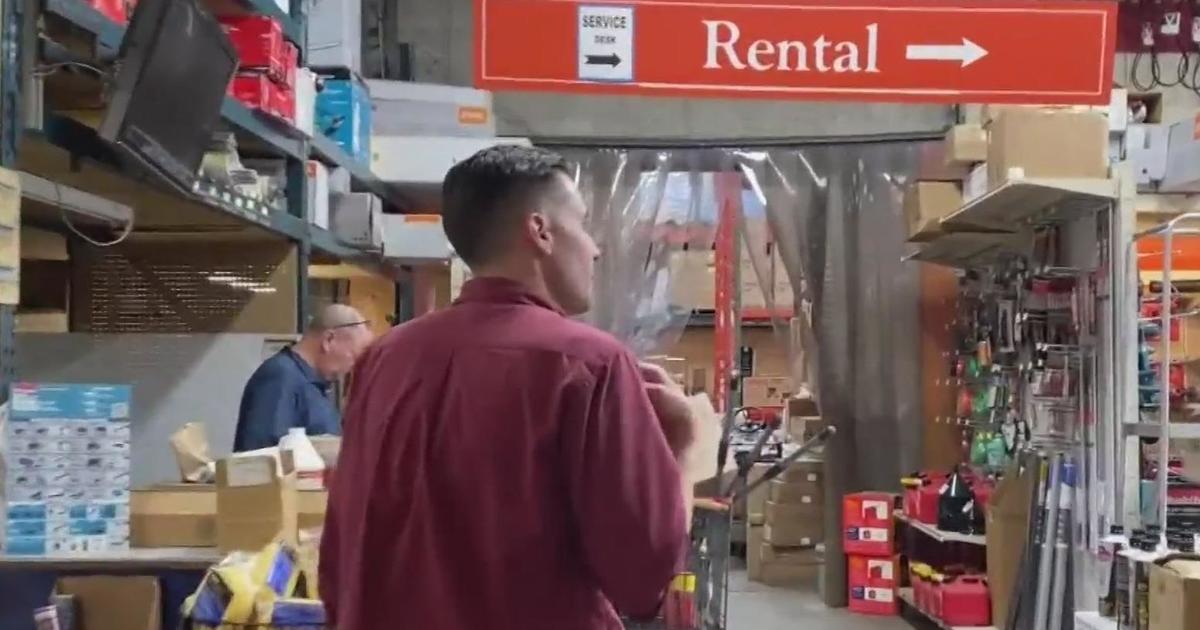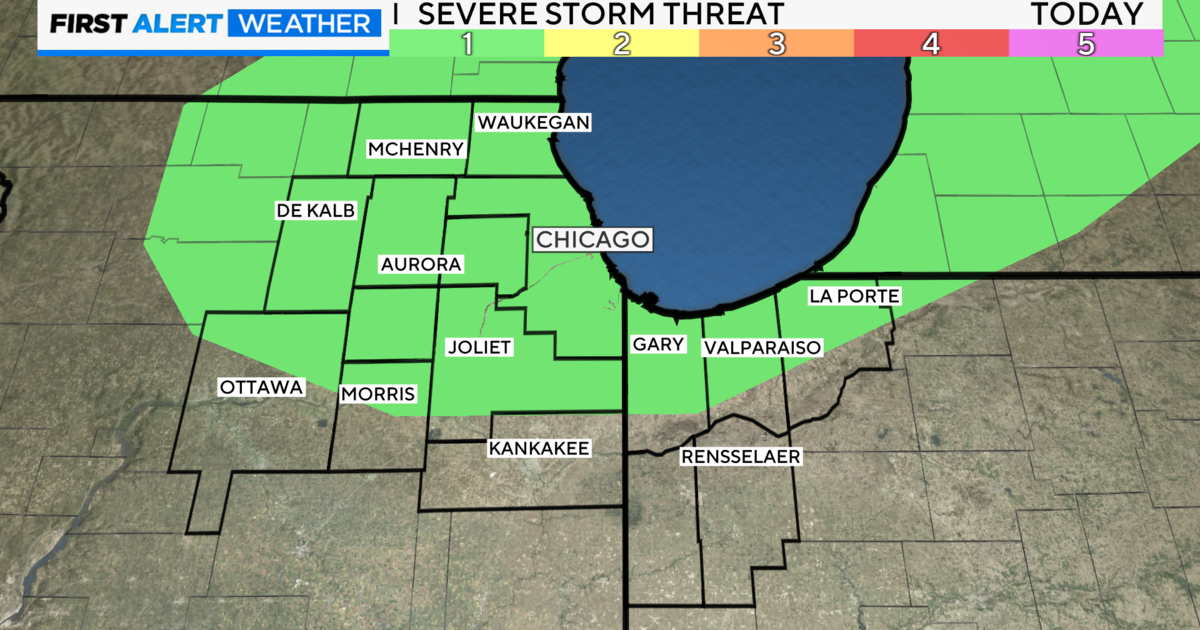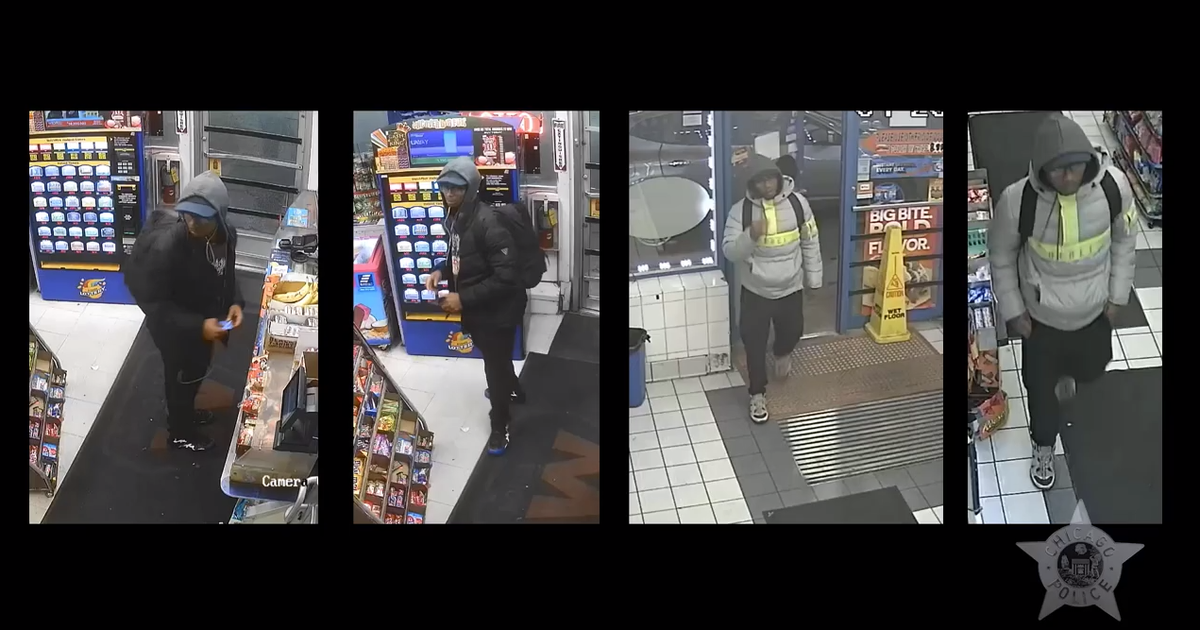Chicago Hits 100 Degrees For First Time Since 2005
UPDATED 06/28/12 - 6:32 pm.
CHICAGO (CBS) -- For only the second time in the past seven years, the high temperature in Chicago hit 100 degrees.
As of 3:40 p.m., the official reading at O'Hare International Airport was 100, with a heat index of 108. The last time the temps hit 100 or more was July 24, 2005 (102 degrees). The record for this day is 101.
But the triple-digit heat didn't last long. By 6 p.m., the temperature at O'Hare had dropped to 86, as a cold front brought scattered thunderstorms to the area.
• RELATED: Tips To Stay Safe In Extreme Heat, Find A Cooling Center
• RELATED: CPS Cancels Summer Classes At 10 Schools Due To Extreme Heat
• RELATED: Hottest Days Ever In Chicago
LISTEN: WBBM Newsradio's Nancy Harty reports
Podcast
CBS 2 Meteorologist Ed Curran says people were out doing yoga Thursday morning, when it was a beautiful 79 degrees. But by 11 a.m., it was nearing 95 degrees at the North Avenue Beach.
A heat advisory is in effect for the entire Chicago area, including Northwest Indiana, from noon to 8 p.m. Thursday. The National Weather Service advises rescheduling strenuous activities to the early morning or late evening, wearing light and loose-fitting clothes, and drinking plenty of water.
Gary Schenkel, executive director of the city's Office of Emergency Management and Communications, said he expects to bring together police, fire, and other public safety agencies to help deal with the heat.
"I think we're going to open an enhanced Operations Center, which will have key components of city services, and city agencies right there," he said.
Schenkel said the heat is serious, but residents might be used to it, given the weather so far this year.
"I think there's an acclimatization period we've all gone through. I mean, unsuspected warm weather in March, and this has been carrying on," he said.
Com Ed Vice President Mike Guerra said the utility is ready for Thursday's heat, and any extra power demand customers might place on the system.
"We have nearly 300 additional crews available to work extended and overnight hours, as needed this week," he said.
Today also has been declared an Air Pollution Action Day, meaning that unhealthy ozone levels could cause breathing for sensitive groups.
Anyone spending any length of time outside is also advised to watch for the dangerous effects of heat.
"The first sign that you're having bad side effects from the heat is that you will have heat cramps – painful muscle spasms in your legs or abdomen," said Bridget Blair of the American Red Cross of Greater Chicago. "The first thing you want to do is go to a cooler area, drink water. Drink it slowly – you don't want to be chugging water. That's not the best thing."
But it can get far worse. Blair says if you are sweating profusely and your skin feels cold and clammy, you may be suffering from heat exhaustion.
At that point, the body can no longer cool itself effectively.
Untreated heat exhaustion can lead to heat stroke, which is defined by a body temperature of more than 105.1 degrees. Someone suffering from heat stroke may suffer from dry skin, a rapid pulse, and dizziness.
"As soon as you have any nausea or vomiting; any fatigue; muscle cramps – if you stop sweating, it's almost you're bordering on an emergency – anything that feels like your body is overheating; getting warm really quickly," said Dr. Omar Lateef of Rush University Medical Center. "Get under shade as quickly as you can and get water squirted on you, and that's really going to help evaporate some of that heat away. And then you get to an emergency center."
The danger of hot cars is also emphasized, particularly for children and pets.
City cooling centers are open to the public, including Chicago police district stations; all 79 Chicago Public library locations during their normal hours; the six Community Service Centers operated by the Department of Family and Support Services from 9 a.m. to 5 p.m.; Park District fieldhouses; and other public buildings. You can locate the nearest city cooling center to you by calling 311.
John Pfeiffer, first deputy commissioner of the Department of Family and Support Services, said the city also provides transportation to cooling centers for those with limited mobility, and will conduct well-being checks on request.
The state of Illinois also has 20 cooling centers in Chicago and the suburbs at its local Department of Human Services offices. Five Illinois Tollway oases also serve as cooling centers – Hinsdale, O'Hare, Lake Forest, Des Plaines, and Chicago Southland Lincoln. For a full list of the state's cooling centers in Illinois, click here.
Meantime, city officials have emphasized that some popular ways of keeping cool could endanger others.
Water Department First Deputy Commissioner Barrett Murphy said Wednesday that residents should not open fire hydrants to stay cool, in part because doing so reduces water pressure in the area, putting nearby homes and businesses at risk if there's a fire.
It also creates potential danger for anyone who tries to cool off by standing in the spray of water from a fire hydrant.
"Open hydrants place everybody in the neighborhood at risk. By these children playing in the fire stream, they can't be seen by passing cars, and you potentially are creating accidents that could put lives at risk," Murphy said.
An air quality warning has been issued for the Chicago area Thursday, meaning certain groups might experience difficulty breathing due to high ozone levels. The Illinois Environmental Protection Agency has called an air pollution action day for Cook, DuPage, Kane, Kendall, Grundy, Lake, McHenry and Will counties.
Those at risk include people with lung diseases such as asthma, bronchitis and emphysema; children; the elderly; and those who exercise or work vigorously outdoors.
But there is some relief in sight – albeit modest relief. Kleist says a light lake breeze will cause temperatures to drop slightly in areas far to the north, from Waukegan to Racine, Wis.
And late in the afternoon, there is a chance for a thunderstorm – rain at last – as a cool front pushes closer.



